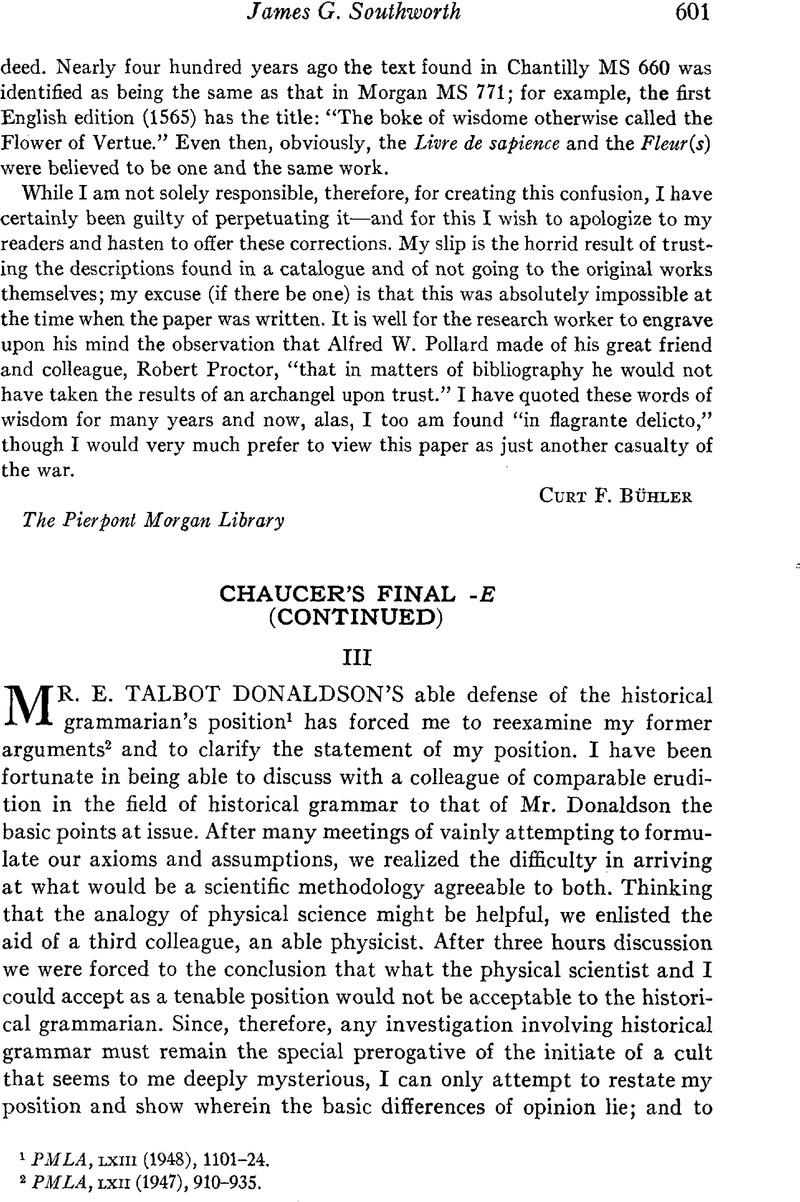Article contents
Chaucer's final-e (continued)
Published online by Cambridge University Press: 02 December 2020
Abstract

- Type
- Comment and Criticism
- Information
- Copyright
- Copyright © Modern Language Association of America, 1949
References
1 PMLA, lxiii (1948), 1101–24.
2 PMLA, lxii (1947), 910–935.
3 An interesting analogy from the physical sciences is that of the possible misinterpretation of the crystal structure of sodium chloride Crock salt) from the experimental x-ray diffraction data. It would appear on first analysis that the sodium and chlorine atoms form a cubic crystal lattice structure. Assuming that it is cubic, it is possible to gather almost completely the information necessary to prove that it is cubic—about 90% of the information required. But the remaining 10% of the experimental evidence required to demonstrate the assumption is lacking. It is further possible, of course, to assume that for some complex reason the information required was lost by virtue of the mode of physical observation. In this paricular case, however, we can explain the evidence completely by assuming a more complex structure. We must assume that the chlorine and the sodium atoms occur as face-centered cubic lattices separately. These are then meshed together to form nominally what first appears to be a simple cubic lattice. The latter explanation of the structure of rock salt demands the absence of 10% of the evidence formerly lacking, and consequently fits the experimental data exactly. It consequently appears that the structure although normally cubic is actually more complex and that the more complex structure explains what appeared to be omission or errors in technique on the basis of the simplest cubic lattice assumption.
4 See, for example, P. Gurrey, The Appreciation of Poetry (London: Oxford Univ. Press, 1935), p. 93, and passages dealing with the treatment of rhyme; and C. Day Lewis, Poetry for You (New York, Oxford Univ. Press, 1947), Chapter iv.
5 (London: Geoffrey Cumberlege, 1947), pp. 12–13.
6 I do not refer, of course, to the discrepancy in actual count. Mr. Donaldson is probably more accurate than I because at the time he made his count he had my figures before him; and where a difference occurred, he could recount. I do not think the difference so important since the ratios for or against are so overwhelmingly conclusive. He objects to some of the words used in my count. Since Child used them in his basic assumption, I can certainly use them.
- 1
- Cited by




